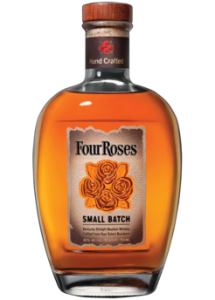Spirited Swine
Tonight I experienced the melding of two of mankind’s greatest inventions, distilled spirits and cured meat. Astor Center (the event space for Astor Wines & Spirits in NYC) hosted the Bacon & Bourbon Expo. Mr. Cutlet (Josh Ozersky) played host to the event, where I had the opportunity to pair some of my favorite American whiskeys with a sampling of artisanal smoked meats. The title was a bit of a misnomer. There were nearly as many assorted American whiskeys as true bourbons. I assume the title was for alliteration and because Bacon & Assorted American Whiskey Expo did not roll off the tongue half as well.
I envisioned a semi-guided tour where meat masters conferred with spirit sommeliers to determine pairings of specialty bacons with complimentary whiskeys. Perhaps an applewood smoked bacon with Bernheim’s Wheat Whiskey or something of that nature. However, it was a bit of free-for-all. There were plates stacked with bacon and thick cut pork belly, containers of ham sticks, and a handful of distilleries represented (each with a small selection of their line – about 20 whiskeys in total). There was a long lapse between courses of bacon as the plates emptied, but the event was great fun and I got plenty of bacon and some really great whiskey.
The stand-out whiskey favorites were the Parker’s Heritage 2nd Edition 27 Year Old and the Rittenhouse Very Rare 23 Year Old 100 Proof Rye. As always, the Tuthilltown table was packed as Ralph Erenzo worked his charm on the gathered bourbon enthusiasts. He makes great whiskey, but I’ve got to give this one to Heaven Hill (they make both Parker’s and Rittenhouse).
Even at 96 proof, the Parker’s is dangerously drinkable. One would expect a 27 year old bourbon to be overly woody and a 96 proof bourbon to burn your nose and your throat. This edition of the Parker’s Heritage collection is surprisingly balanced with notes of spice, vanilla, and marzipan. I’m going to give this a ‘Must Try,’ but, at $200, it is out of my price range.
The Rittenhouse is intense, smooth, sweet and spicy. There was a time when I shied away from rye whiskey. After trying some really good ryes (like Sazerac), rye became part of my regular drink list. The Rittenhouse is unique and far smoother than any rye has a right to be. Its price point is higher than the 18yo Sazerac by $20-50 depending on the source and I am not sure that it is worth the difference. Definitely worth a try though.
The bacon list was not as extensive as the whiskey list, but it was quality. My favorites were D’Artagnan’s Hickory Smoked Wild Boar Bacon and the pork belly from RUB (a NYC bar-be-que joint). I can honestly say that I could subsist entirely on pork belly and bourbon.
The big surprise of the evening was the Bacon-Infused Old Fashions being served up by PDT (go here for the recipe). It is even better than it sounds.
As I type this, my throat is raw from talking about whiskey all night and my fingers still smell of smoked pork fat. I think I should go eat a salad.


